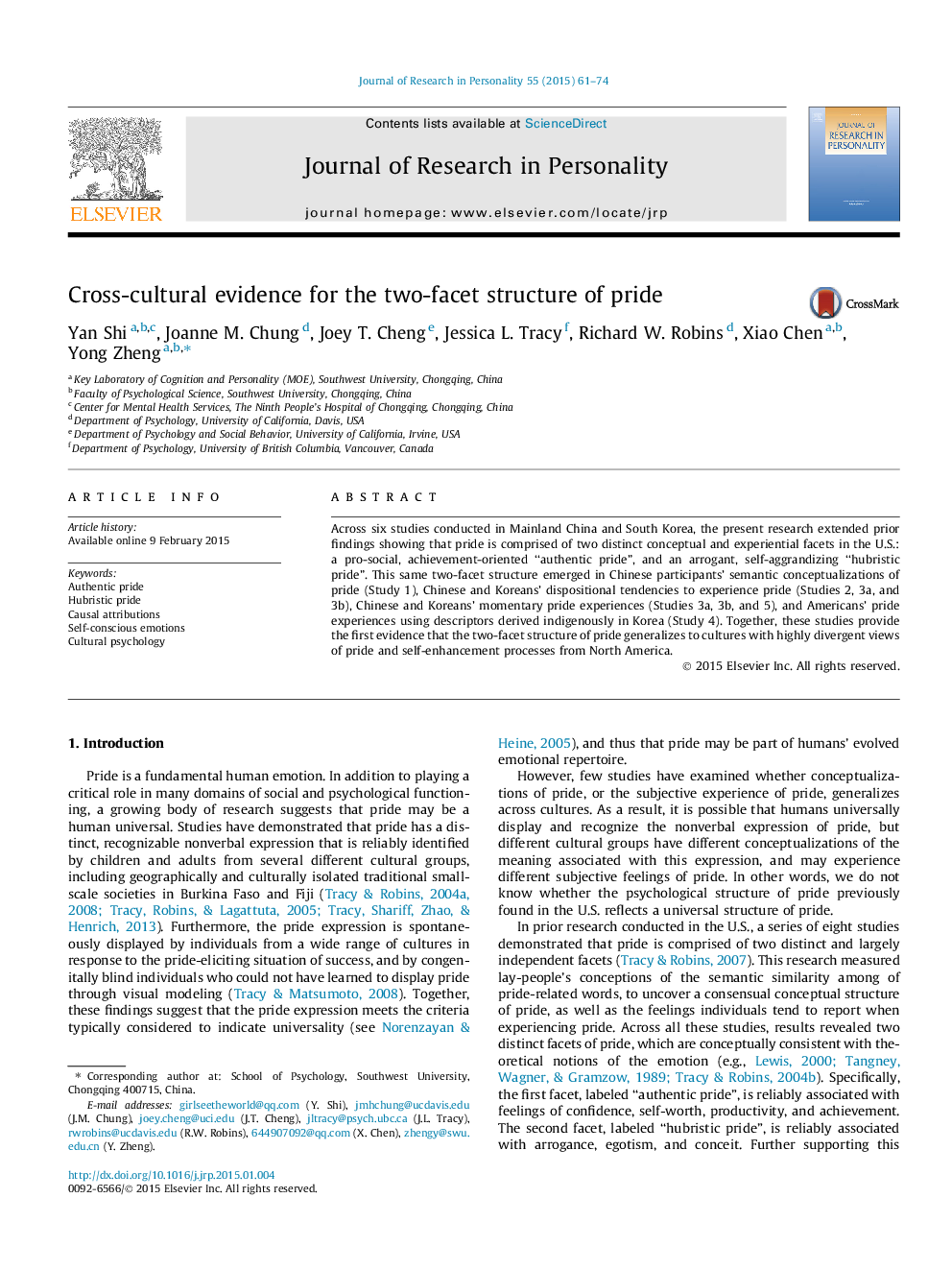| Article ID | Journal | Published Year | Pages | File Type |
|---|---|---|---|---|
| 951264 | Journal of Research in Personality | 2015 | 14 Pages |
•We examined the psychological structure of pride in Mainland China and South Korea.•Results across six studies consistently indicated two distinct facets.•The first facet is a pro-social, achievement-oriented “authentic” pride.•The second facet is an arrogant, self-aggrandizing “hubristic” pride.•These two pride facets converge with those previously found in the U.S.
Across six studies conducted in Mainland China and South Korea, the present research extended prior findings showing that pride is comprised of two distinct conceptual and experiential facets in the U.S.: a pro-social, achievement-oriented “authentic pride”, and an arrogant, self-aggrandizing “hubristic pride”. This same two-facet structure emerged in Chinese participants’ semantic conceptualizations of pride (Study 1), Chinese and Koreans’ dispositional tendencies to experience pride (Studies 2, 3a, and 3b), Chinese and Koreans’ momentary pride experiences (Studies 3a, 3b, and 5), and Americans’ pride experiences using descriptors derived indigenously in Korea (Study 4). Together, these studies provide the first evidence that the two-facet structure of pride generalizes to cultures with highly divergent views of pride and self-enhancement processes from North America.
